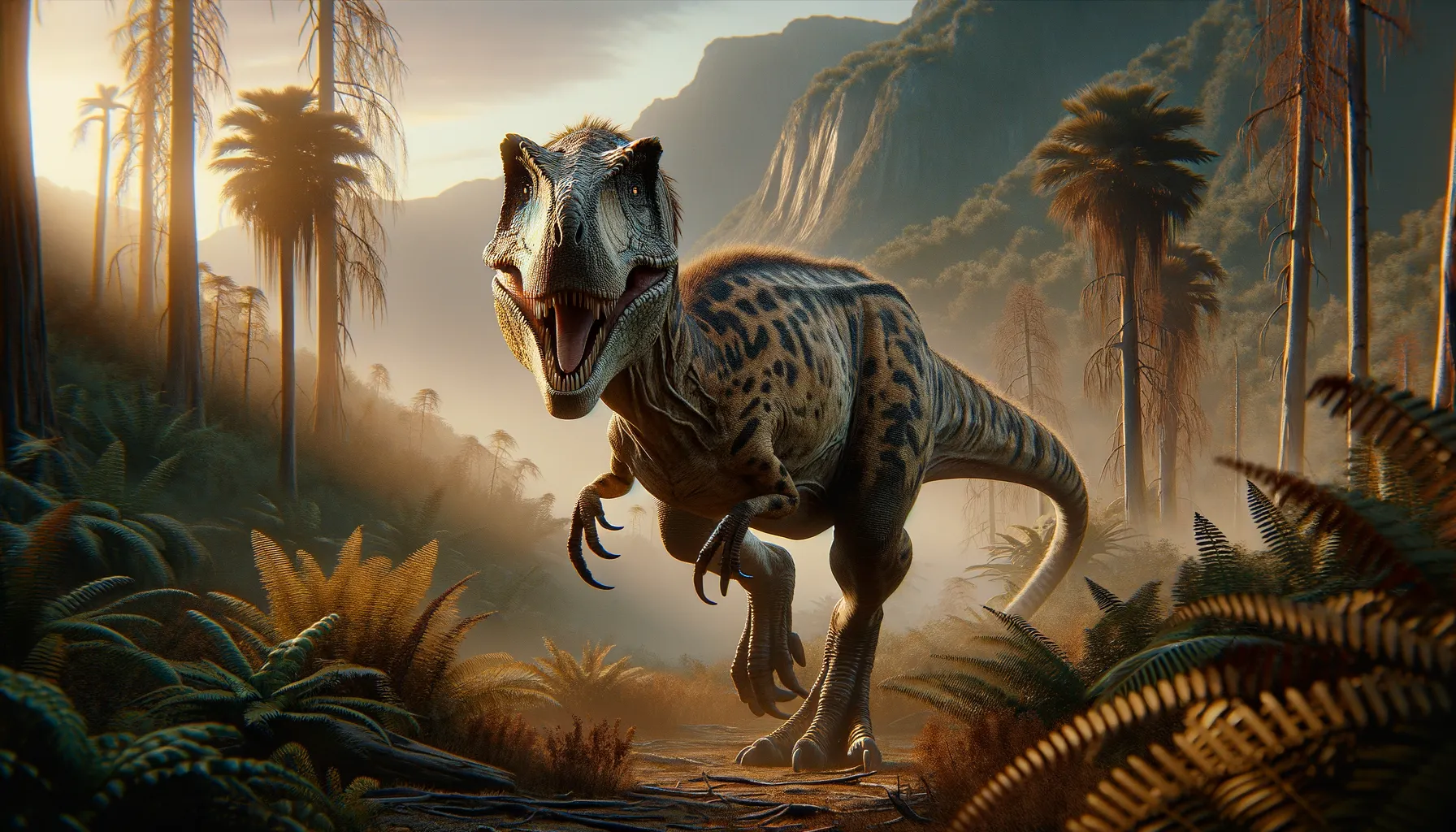
Australovenator
Swift predator of the ancient Australian lands.
Period
Cretaceous
Length
Measured around 6 to 7 meters in length.
Height
Stood about 2 meters tall at the hips.
Weight
Weighed approximately 500 to 1000 kilograms.
Australovenator was a mid-sized theropod dinosaur that roamed the landscapes of what is now Australia during the mid-Cretaceous period. Known for its agility and sharp claws, it earned the nickname 'Cheetah of its time.' Its discovery provided crucial insights into the theropod dinosaurs in the Southern Hemisphere, particularly due to its relatively complete skeleton. Its adaptations indicate it was likely a formidable predator in its ecosystem.
Diet
Australovenator was a carnivore, feeding primarily on smaller dinosaurs and possibly scavenging for carrion when necessary. Its sharp teeth and strong jaw muscles suggest it was well-equipped to slice through tough flesh.
Hunting
This dinosaur likely relied on its speed and agility to pursue prey, using its keen senses to track movements in its surroundings. Its claws and teeth were essential for overpowering and dismembering prey.
Environmental challenges
During the mid-Cretaceous period, Australovenator would have faced fluctuating climates and environmental changes, impacting food availability. Rising sea levels and volcanic activity could pose additional challenges, altering landscapes and affecting the distribution of prey species. Competition with other predators for resources was another ongoing challenge, necessitating adaptability and opportunistic feeding behaviors.
Speed
It was relatively fast for its size, suggesting it could have reached speeds of 40 to 50 km/h.
Lifespan
Estimated lifespan of 20 to 25 years.
First discovery
First discovered in 2009 by Scott Hocknull and his team in Queensland, Australia.
Fun Facts
- Australovenator was a carnivorous dinosaur that lived about 95 million years ago during the mid-Cretaceous period.
- It was discovered in Australia and is sometimes nicknamed the 'Aussie Raptor'.
- Australovenator is believed to have been a fast and agile predator, with a build similar to that of a cheetah.
- It had large, sharp claws on its hands, which it likely used to catch prey.
- Unlike many dinosaurs, Australovenator is known from fairly complete fossil remains, allowing for more detailed studies of its anatomy.
- This dinosaur's discovery has helped paint a clearer picture of the types of theropods that roamed ancient Australia.
- Australovenator is part of the Megaraptoridae family, a group of medium to large theropods characterized by their distinctive claws.
Growth and Development
Australovenator likely hatched from eggs and experienced rapid growth during its early years to reach survivable sizes quickly. As a juvenile, it probably relied on its speed to escape predators while learning hunting skills. Most of its development would involve honing predatory techniques and sharpening its senses to become an effective hunter.
Habitat
It lived in a forested region that resembled seasonal floodplains, with a warm and temperate climate. Its habitat included rivers and lush vegetation, supporting diverse flora and fauna. These conditions provided Austalovenator with ample opportunities to hunt, while also posing challenges, such as navigating thick vegetation.
Interaction with other species
Australovenator shared its environment with a variety of other dinosaurs, both herbivorous and carnivorous. It might have competed with larger theropods for food, requiring efficient hunting strategies to secure sufficient prey. Its position in the food chain as a mid-level predator meant it would often need to avoid larger predators while hunting smaller or similar-sized dinosaurs.
Natural lifespan
In a stable environment, Australovenator might have lived up to 25 years.
Reproduction
Australovenator was oviparous, laying eggs that would hatch into juveniles. Courtship behaviors likely involved physical displays or vocalizations to attract mates. Parental care after laying eggs is uncertain, with juveniles possibly vulnerable to predation until they grew larger.
Social behaviour
While specific social behaviors are hard to determine, Australovenator might have been a solitary hunter like many modern carnivores. However, temporary social interactions, possibly during mating seasons or around watering holes, could have occurred. Juveniles might have displayed different social dynamics, learning from adults until reaching self-sufficiency.
Fossil locations
Australovenator fossils have primarily been found in the Winton Formation of Queensland, Australia. These include a relatively complete skeleton discovered in 2009, providing highly valuable insight into its anatomy and capabilities. Its remains continue to offer essential data for ongoing studies about theropod dinosaurs in the Southern Hemisphere.
